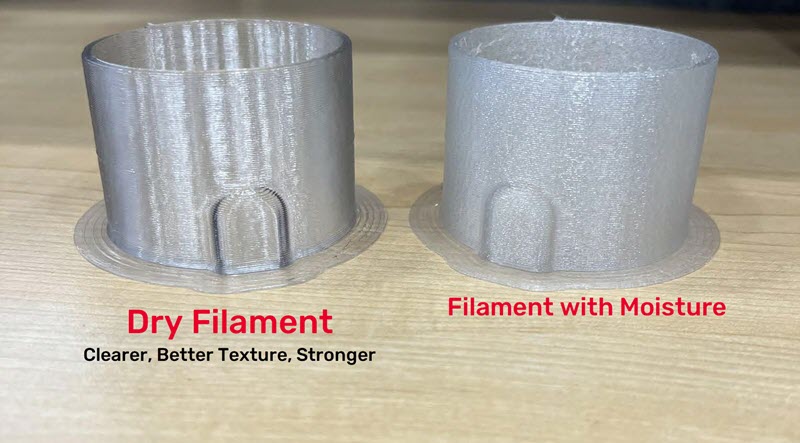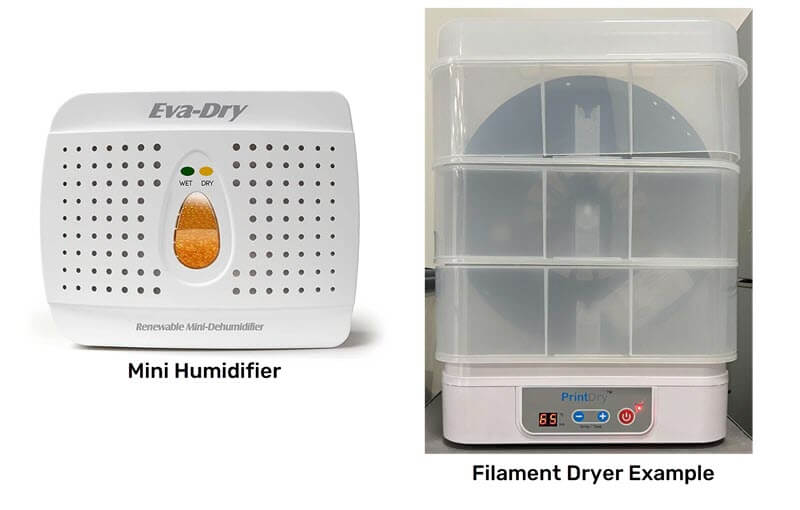Filament Moisture Management in 3D Printing
It may be tempting to open a fresh new roll of filament and immediately use it for a new print. However, filaments are hygroscopic which means they tend to absorb moisture from the air.
Moisture in Filament Will Lead to Low Quality 3D Prints
Why exactly is moisture so detrimental to filament and 3D printing? This is because the moisture that the filament absorbs decreases clarity, weakens the print strength, and worsens the texture of your print. Moisture weakens the polymer chains of the filament, making them more prone to breakage, and a worse texture causes an increase in friction within the sockets. A decrease in strength and increase in friction results in an unsafe and uncomfortable 3D printed socket for a patient.

How to Remove Moisture from Your Filament
We recommended drying the newly opened filament 24 hours before using it. Even if the filament is vacuum sealed, this does not account for the moisture level at the time when the filament was extruded and packaged. There is no guarantee that the filament is 100% moisture free before it is packaged so it is highly recommended to dry the filament before use.
Storing Your Filament Once It’s Been Opened
Once the filament has been opened and used, it should be stored in a sealed environment at 20% humidity or less until it is ready to be used again. Throughout the day, moisture levels in the United States remain about 20% in every state, which means no location is immune to moisture levels. This means that if filament is left out, it is guaranteed to absorb moisture at a certain rate, depending on how much moisture is in the air.
Filament can be stored in a dry box with a mini dehumidifier, which comes with every Emergence PRO™ 3D Printer, allowing it to be in a low moisture environment until the next use. Humidity levels of the storage environment can be easily tracked with a hydrometer, which cost less than $10 to purchase.

Make Filament Drying Part of your Workflow
Adding filament drying to the 3D printing workflow should be a best practice in every clinic. This simple procedure will save wasted time, and prevent faulty sockets and detrimental accidents when preparing the sockets, allowing you to bring the best care to your patients.

